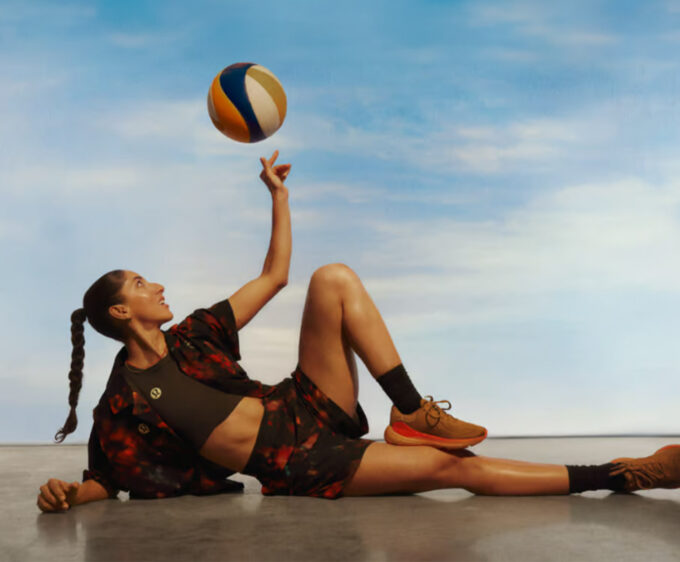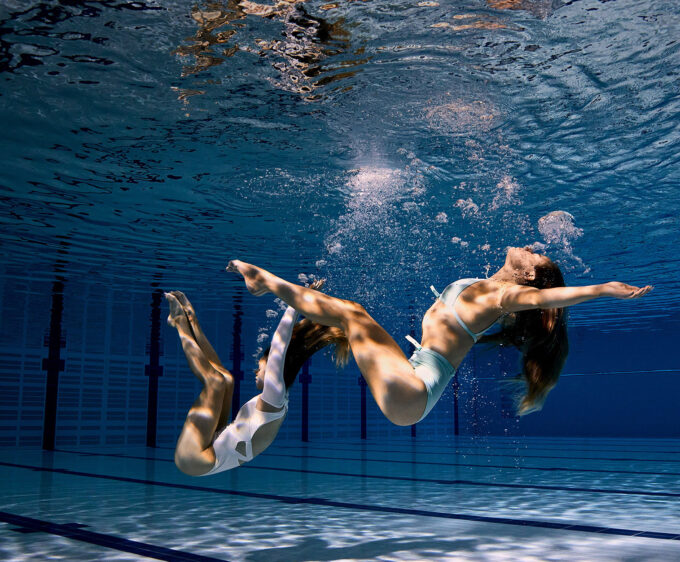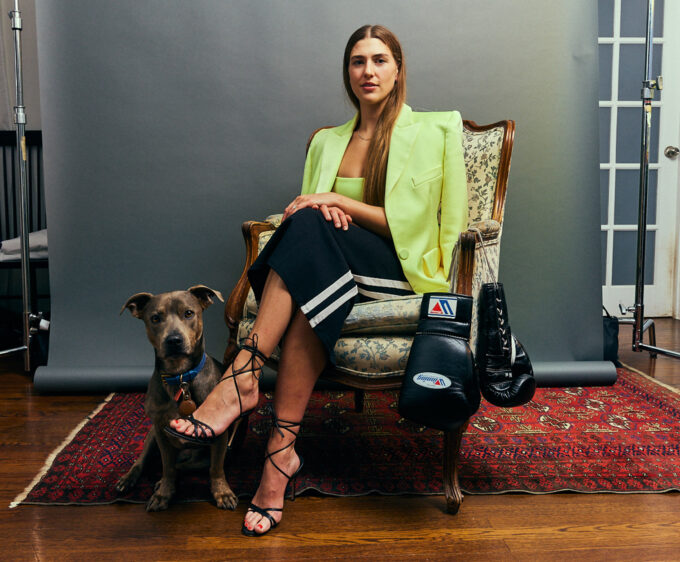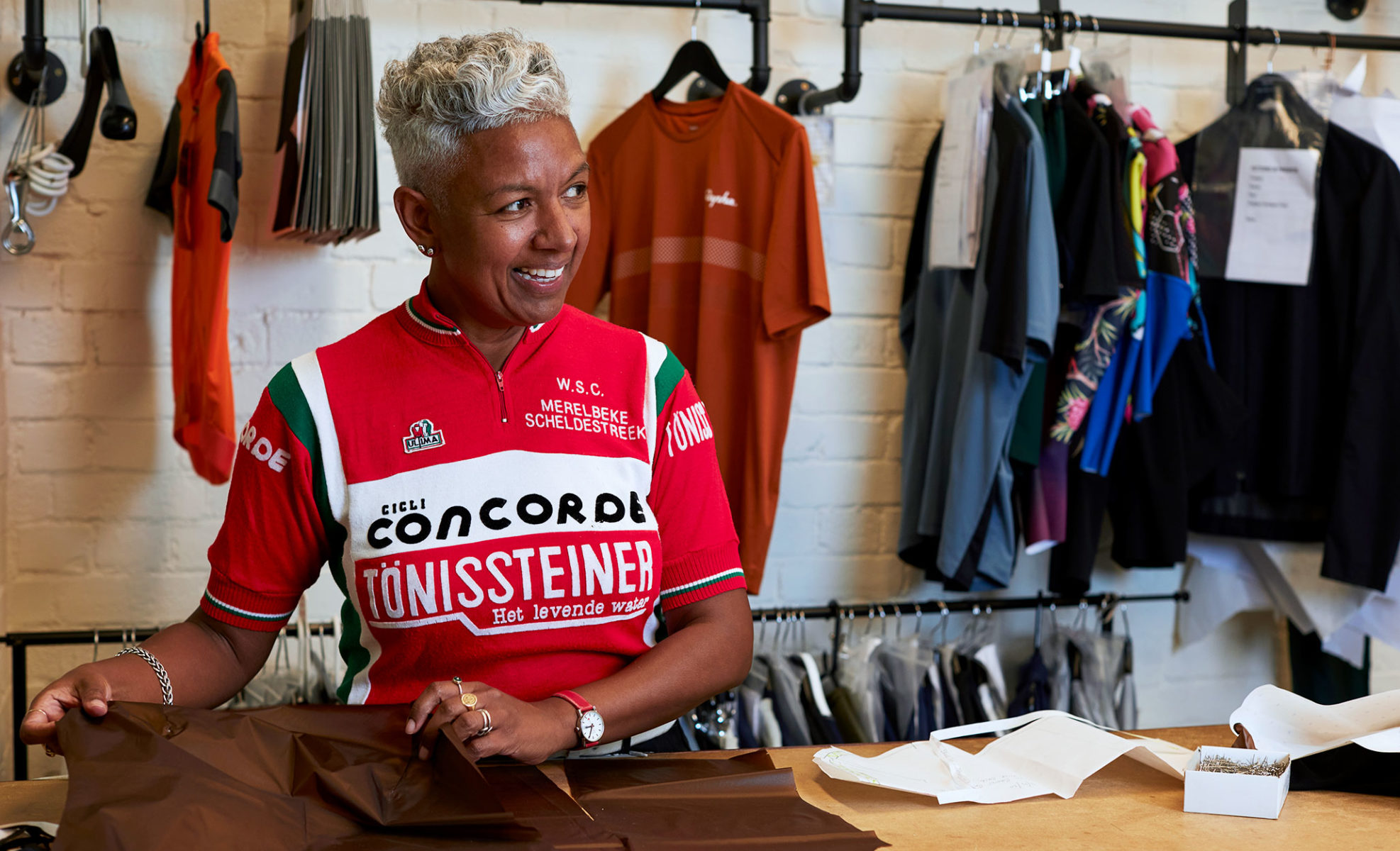
Fashion In Motion
Meet sportswear specialist Claudine Rousseau: “My job is to create clothing that responds to the need of a cyclist and to make sure it’s done in a refined way”
By Annabel Herrick
Let’s admit it: it’s hard to look good on a bike. From head to toe, helmet to cleat, cycling requires a lot of unflattering garb. And yet, the sport has a huge community and remains one of the most sociable hobbies. Setting out on the road means riders can move in tandem, chat along the way, and spend a whole day together. Rather than a gruelling run where gasping for breath doesn’t allow for small talk or a football game that involves more banter than bonding, a smooth cycle is all about companionship where no man – or woman – is left behind.
When Rapha came onto the scene in 2004, a male cyclist no longer had to sacrifice his style. Founded in London by Simon Mottram and Luke Scheybeler, they saw a gap in the market for a premium cycling brand that could build a tight knit community, now known as The Rapha Cycling Club (a membership costs £70 a year). Simon claims they never set out to be a clothing company; their key aim was to get more people involved by designing cutting-edge sportswear that would be loved all over the world. Before Rapha, performance cycling clothing was either basic or try-hard. Simon noticed that cycling was hugely popular with creatives and designers; they loved the intricacies of the bike’s structure as a beautiful, everyday machine. So, if cycling was a visual sport, why didn’t the kit reflect that?
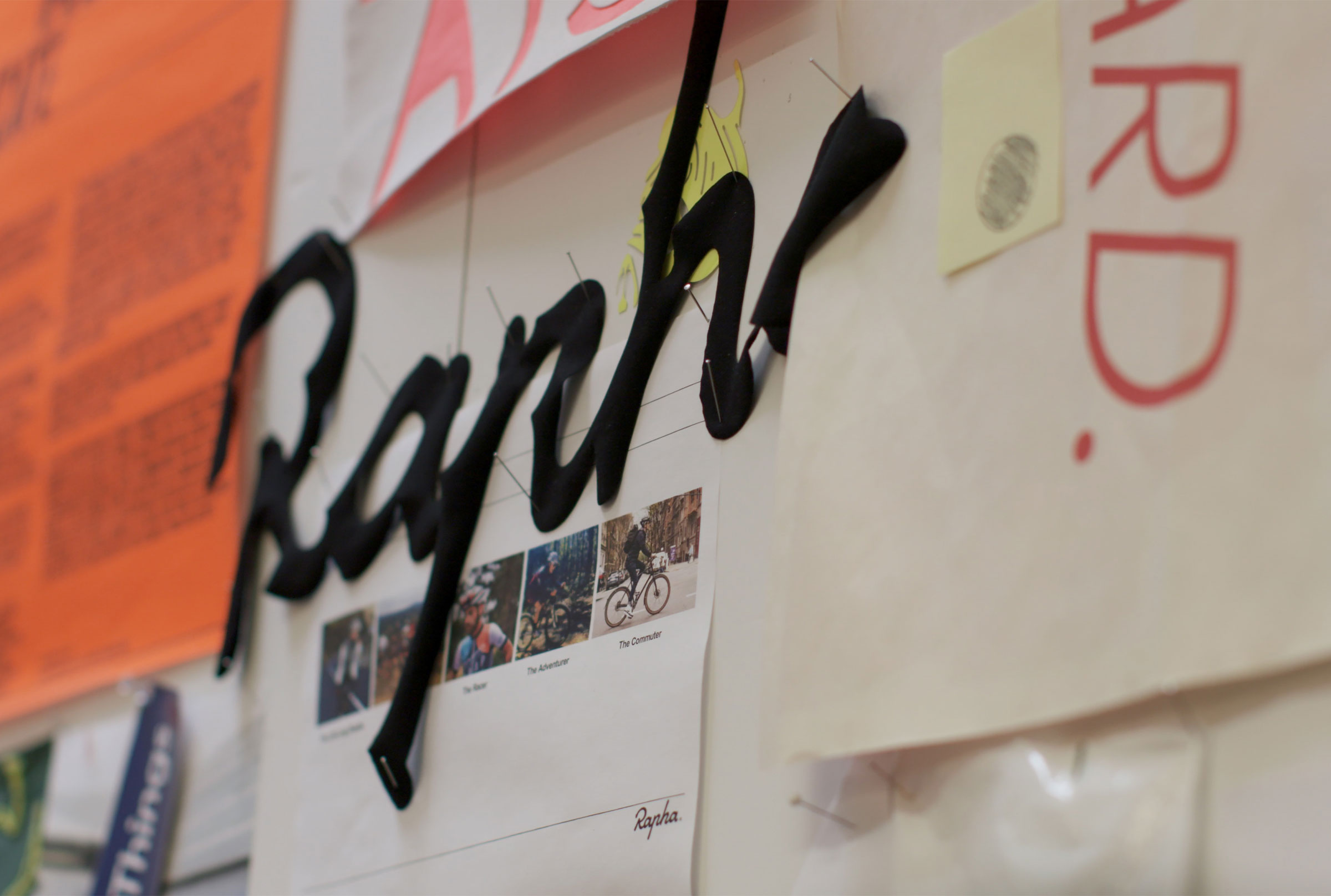
Right from the beginning, Rapha’s customer was clear cut; someone who is now commonly referred to as a Mamil (Middle Aged Men in Lycra). You can picture him now: a wealthy father-of-two who battles a bulging waistline by cycling to work in the City. As the years went on, Rapha often polarised cyclists due to their price point, such as £480 for a cycling jersey and shorts (a 2016 article in the Guardian asked ‘Why do so many cyclists love to hate Rapha?’) Regardless, the fandom boomed and there are now more than 20 ‘clubhouses’ worldwide, totalling 20,000 members globally, making Rapha the biggest cycling club in the world. In recent years, Rapha have expanded into a holistic lifestyle offering, which has included skincare and travel, as well as trying their hand at publishing in-house magazines and films.
Amidst this global takeover, female riders were somewhat neglected, until 2010. That year, Rapha launched women’s clothing with three key products: classic jersey and arm warmers, the classic wind jacket and classic shorts. Although the interest was small at the time, Rapha’s intention was to offer world class products within the women’s market and grow it from there, knowing that they had an opportunity to drive demand.

In 2020, approximately 7.5 million people participated in cycling, either for sport, leisure or travel, according to Sport England. Among that number was a significant rise in the number of female cyclists. By launching their first female-only range ten years prior, an initiative spearheaded by their female staff, Rapha was way ahead of the curve. To learn more about the women revolutionising a man’s world from the inside out, I spoke to the brand’s head of atelier, Claudine Rousseau. In 2015, Claudine was part of the Rapha design team who created the bespoke celebratory jersey Sir Bradley Wiggins wore after his UCI Hour Record Attempt. However, straightaway I hear that, surprisingly, Claudine is someone who only “occasionally rides her tricycle,” but she explained that this role has consistently pushed her out of her comfort zone: “Working for Rapha, I’ve had to ‘out myself’ as an indoor kid. I used to spend a lot of time indoors just making things.”
bespoke

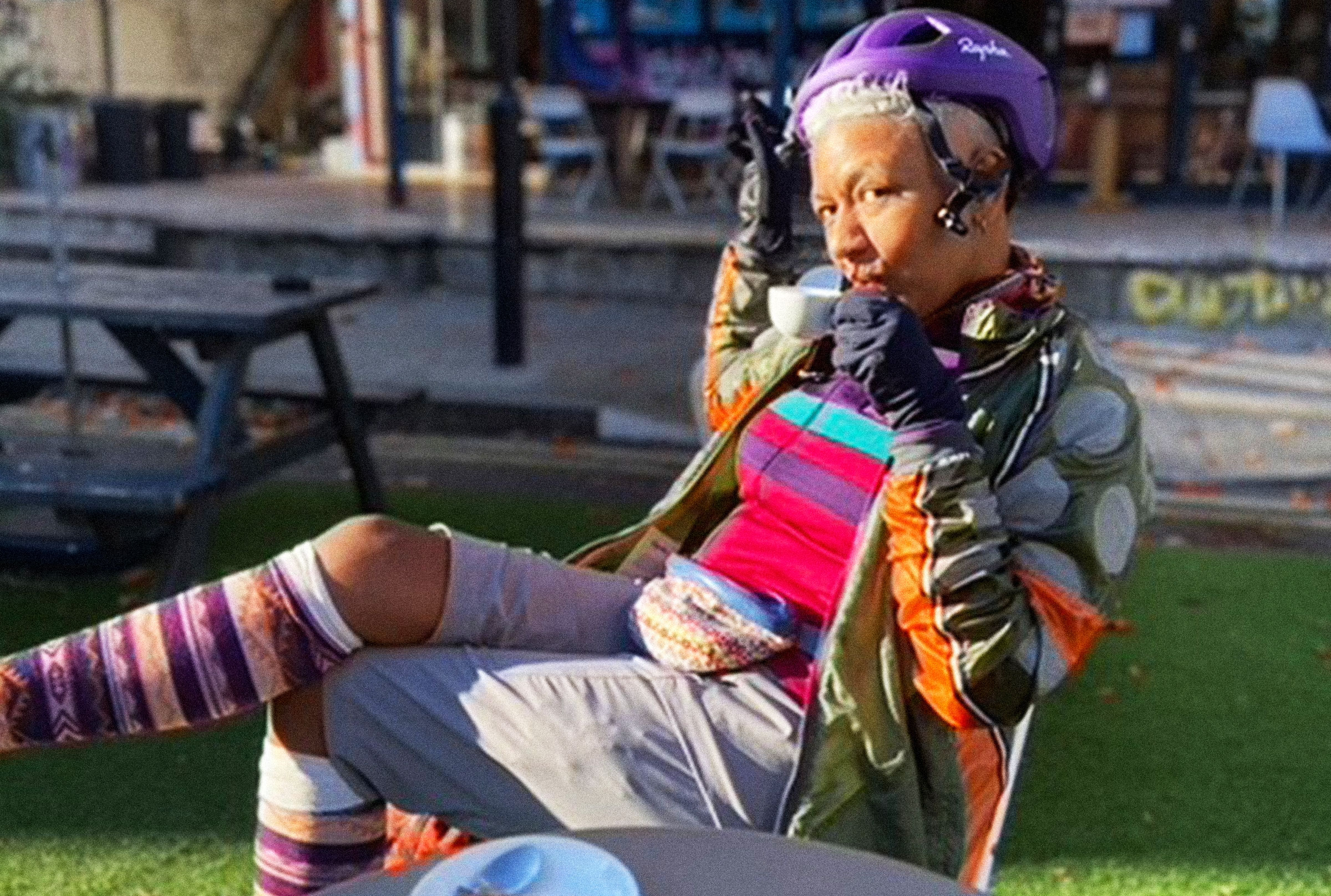
As such, the 50 year old sportswear specialist offers a unique, invaluable perspective at Rapha: “I have a maker’s background as a creative pattern cutter. The way I see it, my job is to create clothing that responds to the need of a cyclist and to make sure it’s done in a refined way. I may not be actively cycling but hearing about the team’s riding experiences informs my process.”
Claudine’s first job took her to Dubai where she designed dresses for Arab women during the first Gulf War. Needless to say, her career has not been a linear one: “It taught me about fit and body types, and how to create clothes that are made for movement.” Prior to committing to Rapha full-time, she worked freelance for mega brands, such as Levi’s, PUMA and adidas, before taking on the position of Programme Director at London College of Fashion. Here she ran six courses, one on sportswear: “There is far more to consider when designing sportswear than traditional fashion garments. It is, in a sense, fashion in motion.”

When I asked for her thoughts on the lines blurring between sportswear and streetwear, something that seems to be more prevalent than ever, Claudine insisted this is not a new trend: “People have always played with that. But the pandemic has obviously amplified the need for comfort; something that’s easy to pull on,” she continued, “sportswear is about the granular details but that shouldn’t mean a product can’t be worn in other contexts.” Talking from her kitchen, Claudine told me she was wearing a Rapha jersey at her desk – living proof of the versatility of Rapha’s kit. The amalgamation of sportswear and streetwear was also reflected in her student body: “There were people from all kinds of backgrounds. You had those interested in sports, such as a figure skater and a bodybuilder, then those who were just really into sports lifestyle.” Regardless of their interest or experience, Claudine would probe her students with the same question: “I’d ask them ‘What do we mean by performance and movement?’ It’s more of a process compared to other courses. The clothes are closer to the body, so it’s about comfort, survival and protection.”
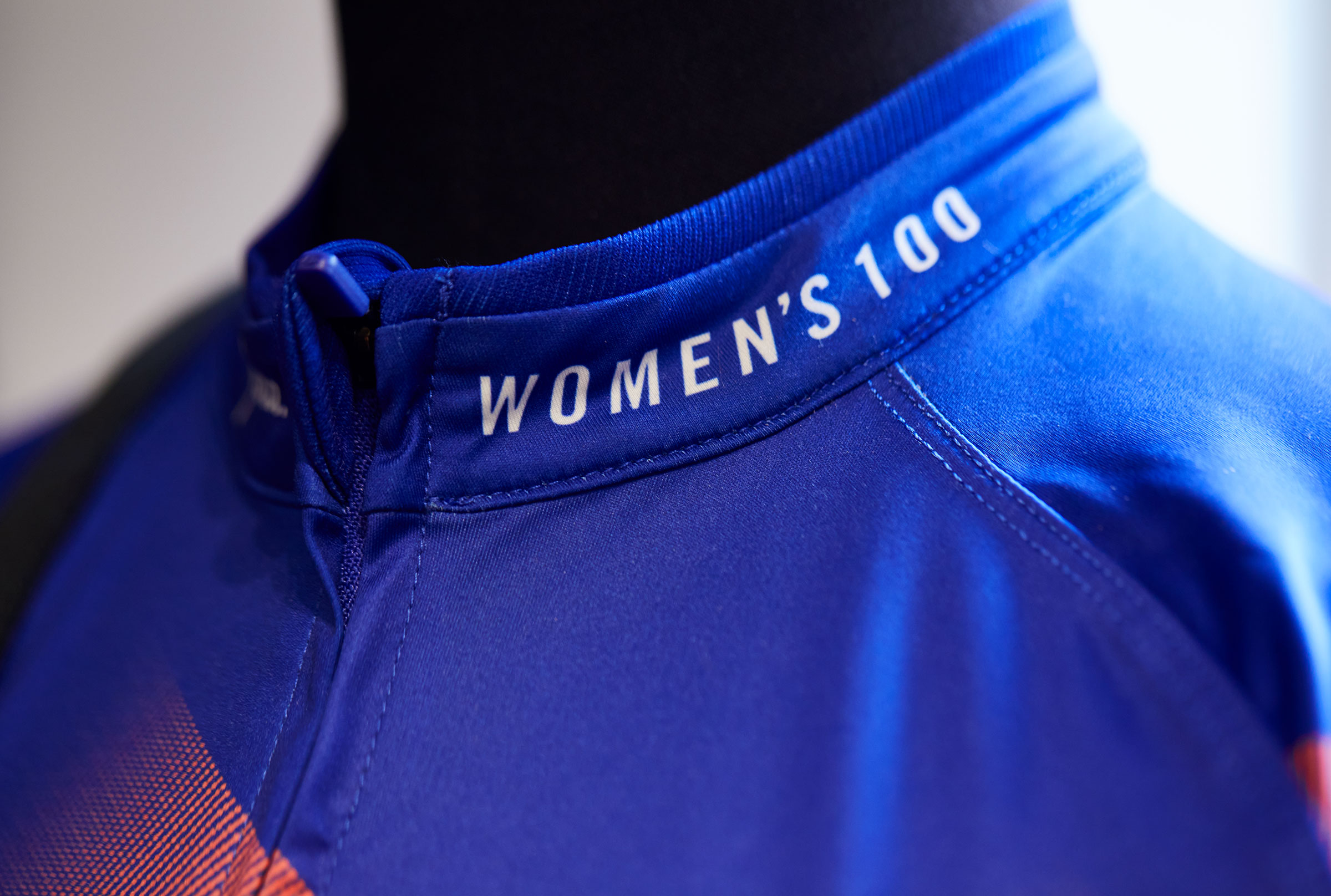
We discussed the pandemic and how it’s changed consumer behaviour. In addition to comfort, Claudine explained that she’s also seen a shift in the way we prioritise health: “Since the pandemic people are investing their money in keeping active and clothes that serve that purpose. Other areas of the fashion industry, like occasion wear, are falling short. We’ve come to realise that moving our bodies is so important for wellbeing.”
As we look back over the course of her 30-year career, I wonder about the biggest changes she’s witnessed. Claudine answered: “In my opinion, it’s people’s desire to have the best. There’s a higher level of expectation when it comes to authenticity. Secondly, there’s an awareness of the environment and more decisions are now based on that.” So, when it comes to Rapha, Claudine is proud to work for a brand that embodies this authenticity: “It’s not just a label. There’s bonafide credibility and depth. We’re the best in what we do.”

Art Direction, Production and Editorial Design Root
